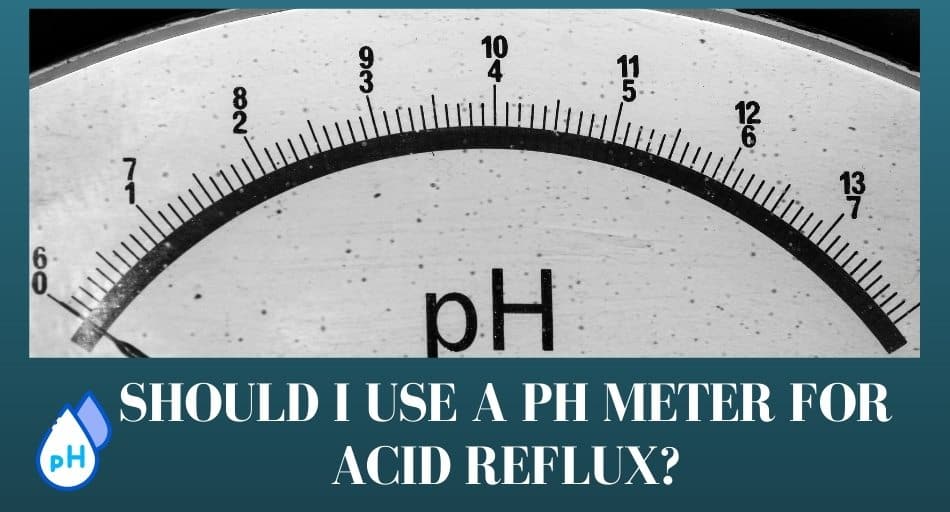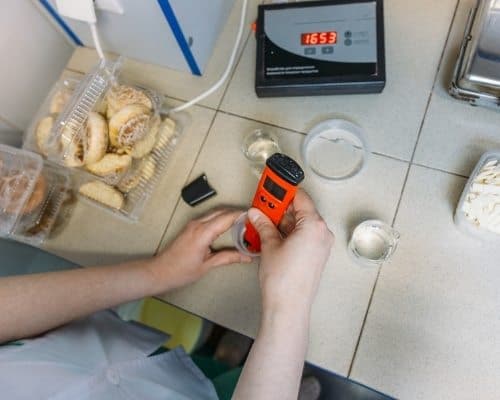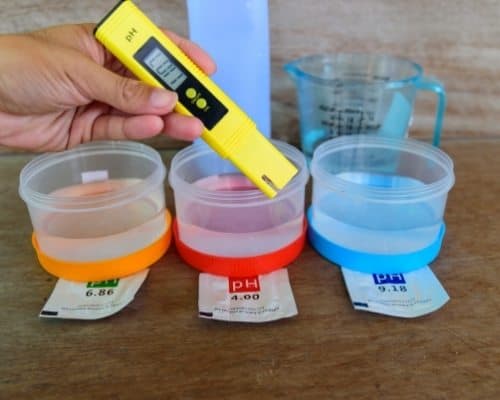Acid reflux and GERD symptoms are very uncomfortable. Unfortunately, more and more people are suffering from these conditions. Because of that, there are many methods of preventing these symptoms and controlling how many acidic foods you’re consuming.

You have to know the pH levels of the food you consume and how they affect your body once they’re digested.
These days, many people choose various pH measuring equipment, such as pH meters, to test their foods. But are pH meters good for testing foods and preventing acid reflux symptoms?
Table of Contents
Should I Use A pH Meter for Acid Reflux?
A pH meter is more accurate than pH strips for measuring the acidity of foods and drinks you’re consuming. But if you’re looking for something to help you determine whether the foods in your diet cause acid reflux or GERD symptoms, a pH meter isn’t the only thing you should use.
This is because some foods have a low pH level, but alkaline-forming properties once digested. As a result, there’s a lot more you should consider.
How does a pH meter work?

A pH meter is digital measuring equipment that helps you determine the pH level of a selected solution, food, water, and various other substances. They’re usually much more precise than pH strips as they’re computerized, which allows you to get more accurate results.
To use them, you simply insert the probe into the sample and wait for a result that comes within just a few seconds.
There are various pH meters available on the market, depending on what you want to test. Some are more suitable for testing soil, while others are safer for testing foods and drinks that you’ll later consume. They also don’t contain any other chemical substances that pH strips do contain, so they’re safer.
On the other hand, a pH meter needs to be calibrated with a buffering solution, often before being used, to show accurate results.
Is a pH meter accurate for testing foods?
Using a pH meter is very easy and relatively accurate as long as it’s calibrated. It also needs to be properly stored (the end of the probe needs to emerge in a solution to remain calibrated) to avoid any errors in measurements. Once that’s done, though, a pH meter is a very precise and versatile piece of equipment for measuring the acidity of foods.
Unlike pH strips, pH meters often have an accuracy of 0.01 pH, which allows you to be as precise as you can get. This is helpful as even a small difference in pH levels is important when it comes to foods and drinks if you suffer from acid reflux or GERD.
Don't know what to drink? Check out these articles: 20 Most and Least Acidic Juices and 20+ Alcoholic Drinks Ranked by Acidity Level
There are also cheaper options that are still precise, allowing you to stay within your budget but still control the acidity of your foods.
You also have to remember to change the electrode of your pH meter as they have an average life of around two years, depending on the brand and how well you take care of it. If you don’t do that, the accuracy decreases, and your results won’t reflect the actual pH level of the food sample.
It’s also essential to choose a pH meter with a sharp probe instead of a bulb one. This is because a bulb probe might break and contaminate the food, which is harmful to your health.

Is it better to use pH strips than a pH meter for testing foods for an alkaline diet?
Using pH strips to test for alkaline and acidic foods isn’t as accurate as using a pH meter. You also won’t be able to test all types of food, including cheese, meat, and fruit, as it’s hard to place them on a pH strip and extract their juices.
In contrast, it’s much easier to insert a pH meter probe into a sample. You also will be able to consume the food later as long as you don’t use any chemicals or harmful substances.
Aside from accuracy, pH strips usually come in a package of 100, so you have a limited number of foods you can test. With a pH meter, you can keep testing foods for a long period as long as you calibrate the equipment every once in a while.
A pH meter also allows you to store past readings, so you don’t have to write them down or take new measurements. This saves you some time and makes the process much faster and efficient. As a result, choosing a pH meter over pH strips might be a better option, particularly if you’ll be testing many food samples.
Can you control your acid reflux symptoms using a pH meter for food?
While using a pH meter or even pH strips is a great way to determine the pH level of the foods you consume, it doesn’t show you how the foods you eat affect your body once digested. This is because a pH meter only shows you the pH value and not the properties of the sample.
For example, lemons and oranges have a low pH level (2.00 and 3.30, respectively), but they’re actually alkaline-forming. Some foods leave an alkaline ash in the form of certain minerals, whereas others leave acidic ash once digested.
Because of that, just simply measuring the pH level of the foods you consume isn’t enough to ensure that you’re not eating foods that worsen your acid reflux symptoms.
To control your diet better, it’s important to do some research and familiarize yourself with alkaline-forming foods. Most of them are fresh veggies and fruit, whereas processed foods as almost always acid-forming.
A pH meter is an accurate piece of equipment that allows you to measure the pH level of all the foods and drinks you consume. But, even though it’s very precise, it doesn’t allow you to see the effects what you eat has on your acid reflux and GERD symptoms.
Because of that, relying only on the pH level of your food isn’t enough, and you need to do more research to reduce or control your symptoms.
> A pH meter can help you determine the pH level of any food and drink you consume with very precise accuracy. Most of them are effortless to use and can help you follow a low-acid, mostly alkaline diet. We created a handy guide on how to buy the right pH meter.
